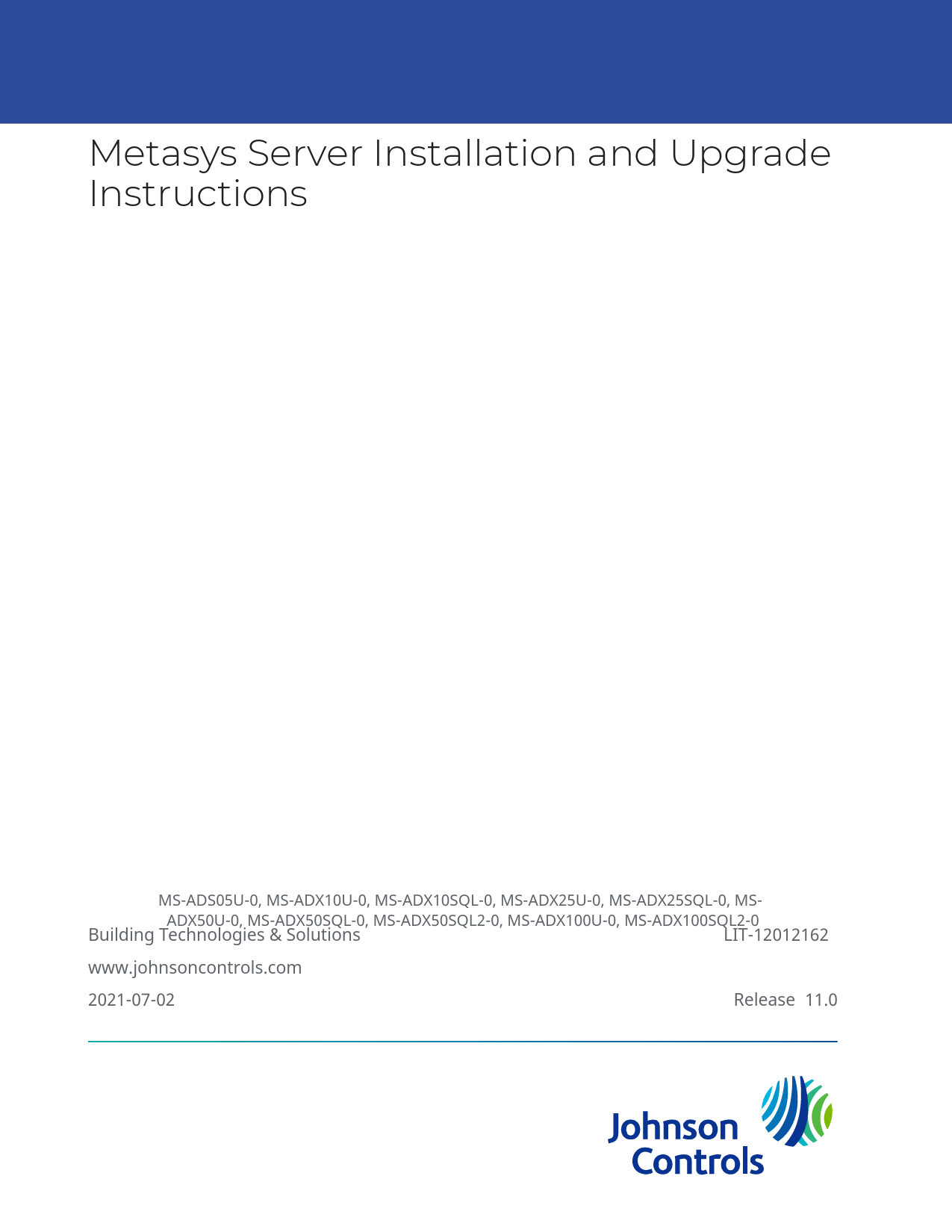About This Document
This document provides detailed instructions for installing and upgrading the Metasys Server software. It covers essential steps, prerequisites, and considerations for a successful deployment of the Metasys Server, also referred to as the Application and Data Server (ADS) or Extended Application and Data Server (ADX).
Key Information
- Product: Metasys Server
- Manufacturer: Johnson Controls
- Document Version: Release 11.0
- Key Model Numbers: MS-ADS05U-0, MS-ADX10U-0, MS-ADX10SQL-0, MS-ADX25U-0, MS-ADX25SQL-0, MS-ADX50U-0, MS-ADX50SQL-0, MS-ADX50SQL2-0, MS-ADX100U-0, MS-ADX100SQL2-0
Getting Started
Before proceeding with the installation or upgrade, it is crucial to review the prerequisite software checklist and recommended operating system and SQL Server combinations. This ensures compatibility and optimal performance of the Metasys Server.
For more information on software requirements and supported configurations, please refer to the official Johnson Controls documentation.
Resources
Visit the Johnson Controls website for the latest product information and support resources: www.johnsoncontrols.com
